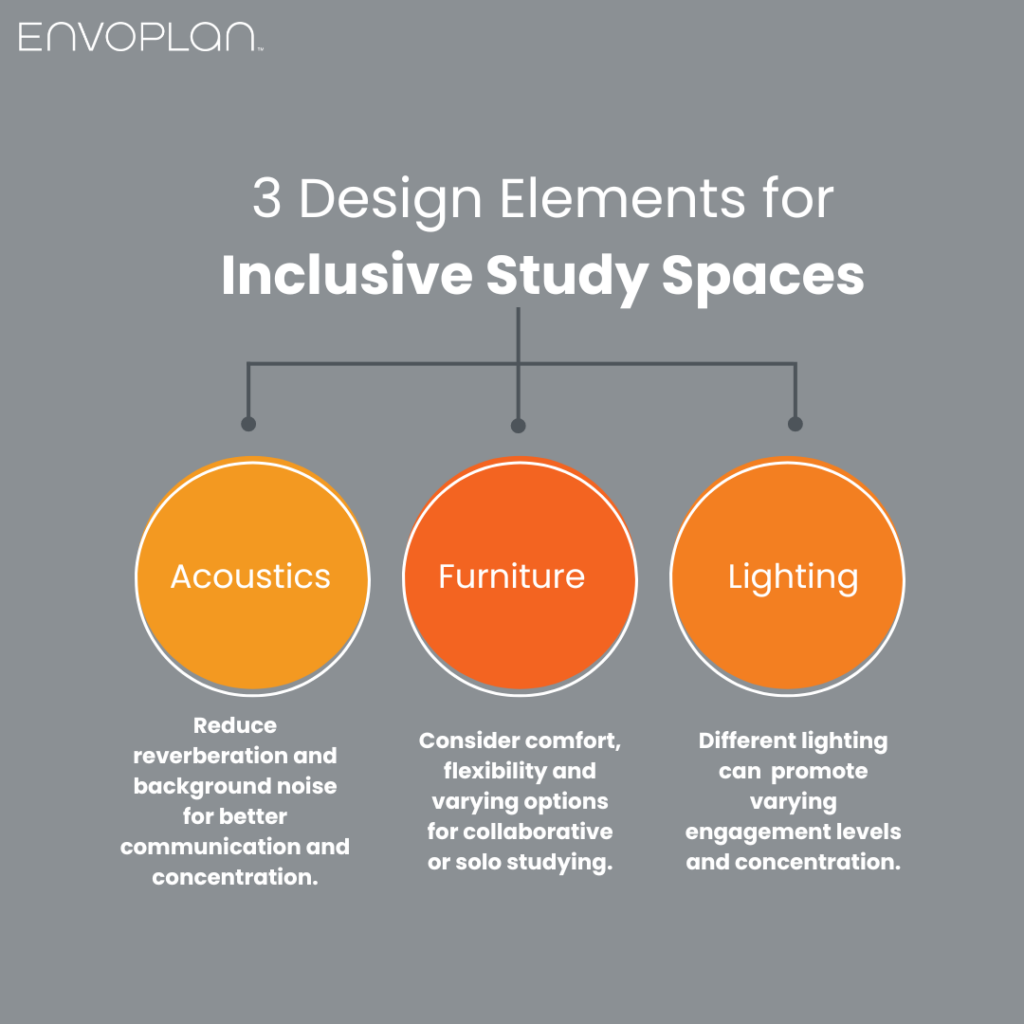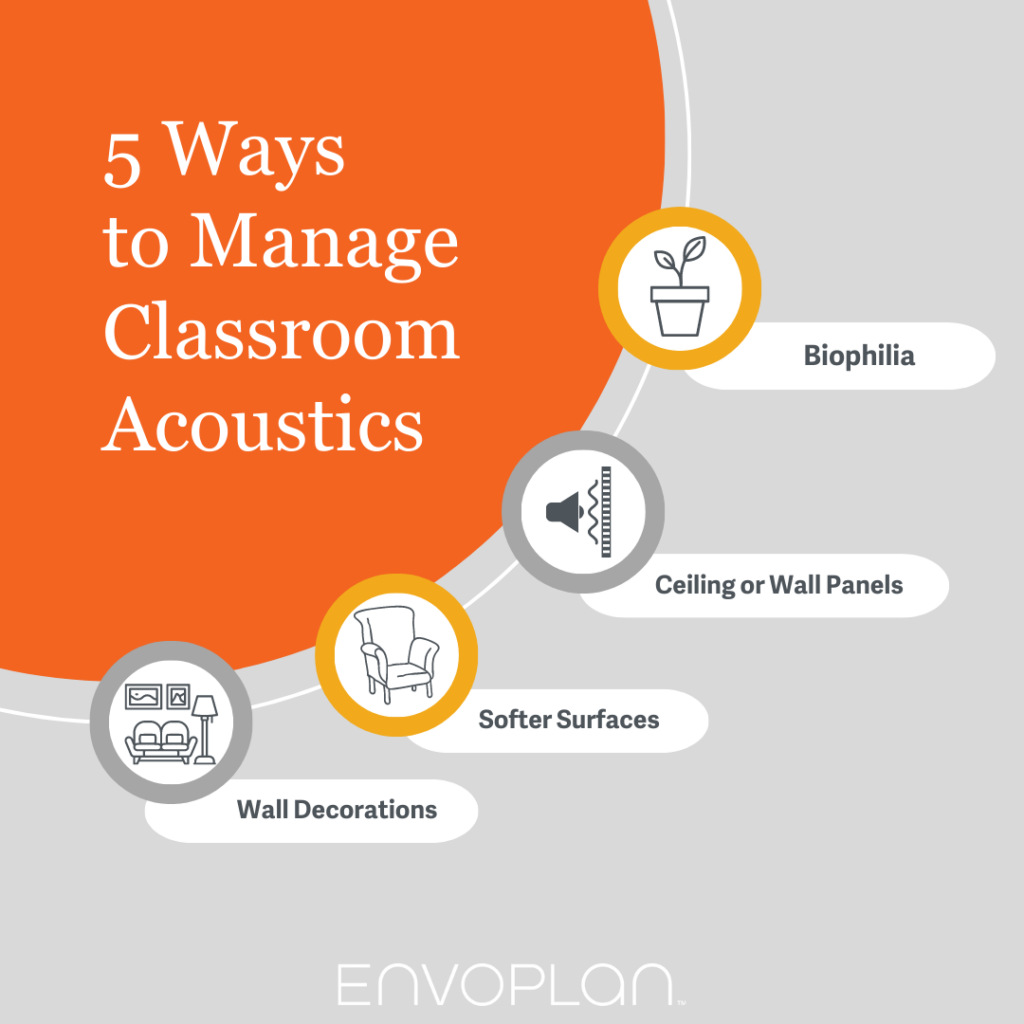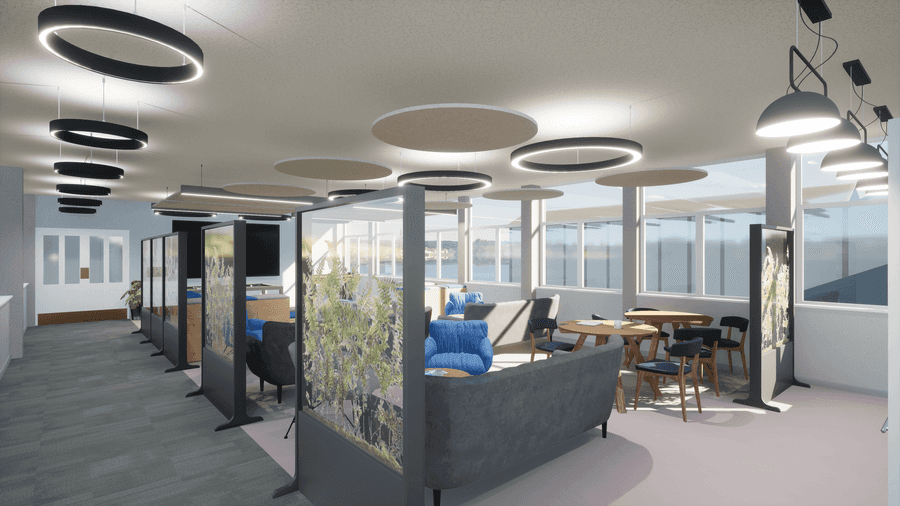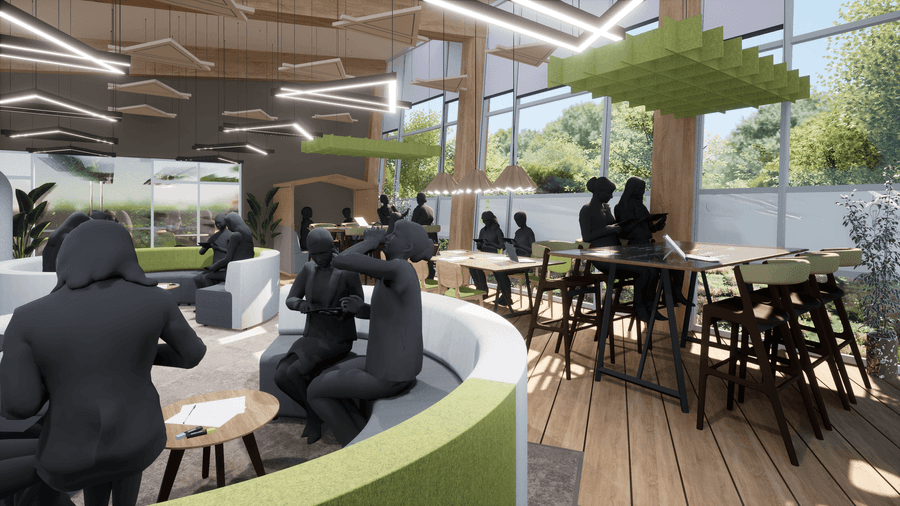Are your study areas genuinely conducive to learning? Do they inspire and motivate students to sit down and study, or do they actively avoid them? The design elements of study spaces play a significant role in shaping the learning experience. Three simple design elements prove invaluable to ensure students can maximise their potential in these environments. These elements focus on creating supportive and encouraging study spaces that foster intrinsic motivation and bring joy to their learning journey.
By prioritising comfort, anxiety reduction, and flexibility, it’s entirely possible to create spaces that align with students’ unique behaviours and moods. Recognising that learning is not a one-size-fits-all endeavour, it’s crucial to provide options and flexibility. Intentionally designing learning environments with careful consideration of lighting, acoustics, and furniture enables the accommodation of different learning styles, resulting in widely inclusive study spaces. So, let’s delve into three simple design elements that are invaluable for any study space.

Acoustics: Creating a Soundscape for Focus
Acoustic design is essential. It directly impacts sound clarity, noise levels, and overall comfort, significantly impacting a learner’s academic performance and mental well-being. By improving acoustics, fewer distractions will arise through enhancing speech intelligibility. But how can such a design be implemented?
Acoustic Panels
Research has shown that too much reverberation can stunt learning outcomes [1]. Installing acoustic panels on ceilings, walls, and partitions will ensure that sound waves are absorbed, managing excessive reverberation. With study spaces, focus is integral. Such panels are designed to minimise background noise, creating a quieter area for focused study.
Biophilia
Bring nature inside. Biophilic touches, such as plants or green walls, have been shown to aid sound absorption and create a calming atmosphere. And the advantages don’t end there. A recent study has revealed that their presence alone improves students’ moods, improving productivity and well-being [2]. Familiarity leads to ease and contentment, and what’s more familiar than biophilia?
Paintings and Curtains
Artwork isn’t just a visually appealing addition. It transcends aesthetics, acting as an auditory aid through its sound absorption qualities. Hanging paintings can help reduce reverberation while adding a welcoming touch to the space. Appropriate curtains are also a great help when stifling those sound waves, creating a space that allows focus and productivity.
Softer Seating
Comfort should be a vital aspect of any welcoming study space. Choose seating options that are upholstered or cushioned, as these will also absorb sound rather than reflect it. Sofas, padded chairs, or bean bags can provide pleasant seating while contributing to acoustic control.
Study Booths
In most learning environments, collaboration is critical. Therefore, consider an option that promotes both group-study and individual work. Study booths are especially useful for managing acoustics and accommodating different learning styles. Learning environments should align with various learning styles, so providing options for dynamic learning is an absolute must.

Bright Ideas: Lighting for Optimal Learning
Lighting is crucial in study spaces. After all, it affects alertness, visibility, and the overall ambience. Research suggests that a balance is necessary [3]. To achieve ideal learning conditions, consider a few factors, such as illuminance, uniformity, glare, flicker, and colour. From a design perspective, you can certainly attend to such factors. Let’s go through some viable options.
LED Lighting
Opt for LED lights with a colour temperature between 4100K and 5000K. LED lights offer several advantages over fluorescent lights, such as eco-friendliness, reduced flickering, and a calming effect that aids concentration and focus.
Yellow vs White Light
Research suggests that different light colours can impact academic performance and mood. Cool-white LED light can promote heightened alertness and learning outcomes, while warm yellow light induces relaxation and enhances independent work activities. Finding a balance and allowing the opportunity for options is key here.
Spotlight Lighting
Incorporate spotlight lighting in study spaces, especially for independent and focused work areas. Spotlight lighting provides directed illumination, reducing harsh shadows and creating a more conducive environment for concentration.

Seating Arrangements: Comfort and Collaboration
Seating arrangements play a significant role in study spaces as they can influence collaboration, comfort, and flexibility. To create inclusive study spaces, consider the following seating options:
Larger Curved Seating
Curved seating arrangements in study spaces have proven to be highly effective in promoting student collaboration and interaction. If you opt for larger curved seating, students can easily face each other, fostering a sense of engagement and openness.
This arrangement encourages group discussions, brainstorming sessions, and the exchange of ideas, creating a dynamic learning environment. Students can benefit from diverse perspectives and collective problem-solving, enhancing their understanding of the subject matter while accounting for individual learning styles.
High Tables and Stools
High tables and stools provide an alternative seating option that promotes collaborative learning in study spaces. These elevated surfaces encourage students to gather around and engage in group activities. High tables and stools promote an active and energised atmosphere by facilitating a standing or perching posture, boosting students’ focus and participation.
Ultimately, intentionally designing learning spaces can foster intrinsic motivation, reduce anxiety, and enhance the joy of studying for all students. Learning is not one-size-fits-all, and study spaces should represent this.

References:



